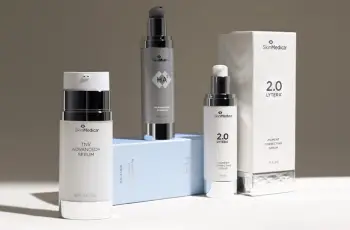
How to Winter-Proof Your Skin: A Complete Guide to Transforming Your Skincare Routine for Cold Weather
As summer fades and cooler weather takes over, it’s time to reassess your skincare routine and prepare for the challenges of winter.
Winter brings with it low humidity, cold winds, and indoor heating that all work together to strip your skin of essential moisture, causing dryness, irritation, and dullness.
No matter your skin type—dry, oily, combination, or sensitive—adapting your routine for winter is key to keeping your complexion healthy and hydrated.
Instead of waiting for your skin to react to the cold, take a proactive approach with this step-by-step guide to protect and nourish your skin all season long.
Why Winter Wreaks Havoc on Your Skin
Cold air lacks humidity and draws moisture from the skin, weakening your skin barrier and causing tightness, flaking, and increased sensitivity.
Indoor heating adds to the problem by further dehydrating the air, leading to a cycle of moisture loss that leaves skin vulnerable to damage.
Oily and acne-prone skin can also suffer, as dryness may trigger an overproduction of sebum, potentially leading to breakouts and congestion.
A compromised skin barrier is less effective at defending against environmental stressors, making your winter skincare routine more crucial than ever.
Step 1: Exfoliate—Gently and Wisely
Exfoliation helps remove dead skin cells that accumulate more slowly in winter, allowing serums and moisturizers to absorb more effectively.
Gentle exfoliation once or twice a week prevents dullness, smooths skin texture, and helps maintain a radiant glow despite the cold.
Choose chemical exfoliants like lactic acid or mandelic acid, which are less likely to irritate sensitive or dry skin compared to physical scrubs.
If you prefer a physical exfoliant, opt for one with soft particles and added hydration like Procoal’s Exfoliating Face Scrub with charcoal and pumice.
Avoid harsh scrubs with jagged particles that can cause microtears, which worsen dryness and disrupt your skin’s protective barrier.
Step 2: Layer on Hydration
Drinking water is important, but in winter, topical hydration becomes essential because your skin is the last to benefit from internal hydration.
Hydrating ingredients draw moisture to the skin and help keep it supple, smooth, and resilient even in harsh conditions.
Look for products with humectants like hyaluronic acid, glycerin, or aloe vera to pull moisture into the skin’s surface layers.
Add emollients such as squalane, shea butter, or ceramides to soften and smooth the skin, improving its texture and comfort.
Finish with occlusives like petrolatum or beeswax to seal in all the hydration and prevent water loss throughout the day or night.
Apply a hydrating serum followed by a thicker moisturizer or balm for maximum winter moisture retention.
Don’t forget the eye area—use an eye cream with peptides and hyaluronic acid to keep this delicate region from drying out.
Step 3: Keep Wearing SPF
SPF is a year-round essential, even during overcast winter days when the sun seems less intense.
UVA rays, which contribute to skin aging, remain present and harmful all year and can penetrate clouds and glass windows.
Snow reflects up to 80% of UV rays, increasing exposure when you’re outdoors during winter sports or snowy walks.
Choose a broad-spectrum sunscreen with SPF 30 or higher and hydrating properties to protect your skin and support moisture levels.
Apply sunscreen daily, even if you’re indoors most of the day, as UVA rays can still reach your skin through windows.
Step 4: Don’t Forget Your Lips
Lips are more vulnerable in winter because they lack oil glands and cannot produce moisture on their own.
Dry, chapped, or cracked lips are common but preventable with proper care and protection.
Exfoliate gently with a sugar scrub once or twice weekly to remove dead skin and promote smooth, soft lips.
Follow up with a nourishing lip balm containing shea butter, beeswax, or vitamin E to seal in moisture and protect from the cold.
Avoid licking your lips, as saliva evaporates quickly and worsens dryness, leaving lips even more irritated.
Step 5: Treat Skin to Weekly Masks
Face masks are an excellent way to provide an intense boost of hydration and nutrients when your skin needs extra care.
Use sheet masks rich in hyaluronic acid or marine collagen for instant hydration and plumpness.
Cream masks with antioxidants and emollients are perfect for calming redness and rebuilding your skin barrier.
Overnight sleeping masks seal in active ingredients while you sleep, enhancing your skin’s recovery process.
Consider a Marine Moisture mask on Sundays or after outdoor exposure to soothe and rehydrate your skin deeply.
Step 6: Adjust Your Makeup Routine
Winter makeup should complement your skincare routine by supporting hydration and adding radiance to your complexion.
Switch from mattifying foundations to dewy or satin finishes to enhance the glow and prevent a cakey appearance.
Cream-based blushes and highlighters give a fresh, hydrated look that mimics natural winter flush without emphasizing dryness.
Use a hydrating setting spray to lock in makeup and moisture, giving your face a refreshed and luminous finish.
When your skin is hydrated, your makeup sits better and lasts longer, reducing the need for heavy layers.
Bonus Tips for Maximum Skin Protection
Use a humidifier in your home or bedroom to counteract the drying effects of indoor heating.
Avoid long, hot showers, as hot water strips the skin of its natural oils—opt for shorter, lukewarm showers instead.
Switch to a richer cleanser, such as a cream or oil-based formula, which cleans without over-drying the skin.
Layer your skincare—start with lighter hydrating serums and finish with heavier creams or balms to lock in moisture effectively.
Protect exposed areas like hands and neck with gloves, scarves, and rich moisturizing creams throughout the season.
Final Thoughts: Prepare Now, Glow Later
Winter doesn’t have to spell doom for your skin. With the right adjustments to your routine, you can keep your skin glowing and comfortable all season.
Investing time in winter skincare is a form of self-care that pays off in smoother texture, fewer breakouts, and long-lasting radiance.
As the seasons change, so should your routine—just a few thoughtful tweaks can make a dramatic difference in your skin’s health.
Start now, before the cold fully sets in, and enjoy the months ahead with skin that’s resilient, moisturized, and glowing.
Your skin will thank you—and you’ll head into spring looking as fresh as ever. ❄️✨


